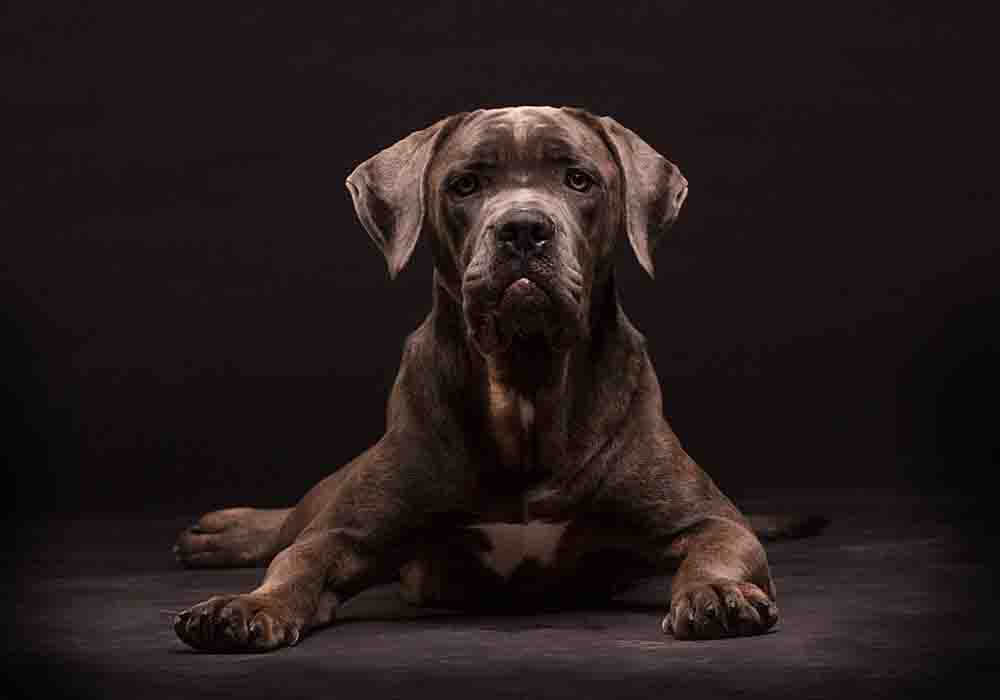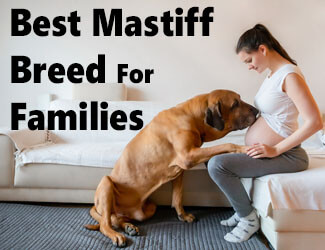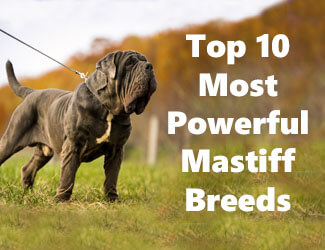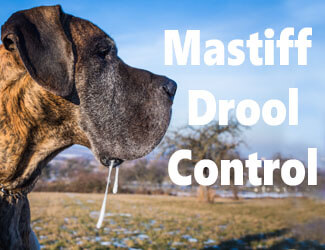How to Tell If Your Dog Is A Mastiff
Behaviors and Characteristics Offer Clues
by Ken Alden
Wondering how to tell if your dog is a Mastiff?
Determining which breed of dog you have can be rather hard at times, especially with puppies or mixed breeds. When looking at your dog, you may have some suspicions as to what exactly they are. How does one tell if their dog is a mastiff?
How To Tell If Your Dog Is A Mastiff
Mastiffs have certain characteristics that distinguish them from other breeds. Some are:
- They are large dogs weighing between 120-200 pounds
- They have muscular bodies with a double coat of fur.
- They have droopy, wrinkly faces and floppy ears.
- They usually have black muzzles.
- They are very laid-back.
- They tend to drool, snore and well…pass gas
If your dog checks off the characteristics on this list, then you probably have a Mastiff! Read More Below...

Some Mastiff Dog Breed Characteristics
These dogs are very big boys. The males can get up to 30 inches tall and the females fall only inches behind. They weigh anywhere from 120 pounds to 160lbs depending on gender. Males can get even bigger than average, getting up to weights of over 200 pounds!
Like any other dog, they can live for about six to ten years on average. They are friendly dogs and their size doesn’t reflect naughty behavior. They tend to be very brave and will be very loyal to their owners.
They have a lot of muscle in their bodies and have a short double-coated layer of fur. You usually see light beige colors as their main shade; however, browns and black aren’t unheard of in the Mastiff line. Sometimes, you might even see them carrying a pattern of messy stripes.
Mastiffs are huge and have a lot of extra skin, so their faces are usually covered in wrinkles, featuring drooped eyes and flopped ears. They have droopy jowls and, most of the time, their eyes come in a dark color like hazel or in a shade of brown. Their tails aren’t particularly short nor long and are not fluffy, but rather thinly coated with fur.
Typically, they will have a black muzzle, so their nose, mouth,
and eyes are dark. They also have dark ears. The rest of them tends to be a
lighter color than these areas of their face. You can also tell you have a mastiff by their laid-back energy and
tendency to drool and snore. They are very lovable, and if you’ve had
one since it was a puppy, you can expect them to still think they are a
lap dog even when they are all grown up.
Typical Mastiff Behavior Traits
Mastiffs are funny dogs; they have their own personalities and like to be authentic to who they are. There are some telltale signs your dog is a Mastiff. Some of the behavioral signs that you have a Mastiff include:
- Pass a lot of gas
- Leave lots of drool
- Destroy stuff when bored
- Protect you
- Snore loudly
- Laze around the house
- Are wary of strangers
- Drink sloppily
- Get bloated
Grooming Might Be A Clue
If you’re still wondering if your dog is a mastiff, you should reflect on their grooming needs. Mastiff dogs do a fair amount of shedding. They leave hair on clothes and furniture. However, they are not heavy shedders, so fur grooming isn’t very intensive.
Mastiffs drool a lot. These dogs are the type that will leave big puddles of drool everywhere they go. If you want to give them attention and play with them, expect massive amounts of slobber to come with it. If your dog is drooping from the mouth with spit, then you might have yourself a mastiff.
The grooming regimen of a mastiff is fairly easy, and you’ll find all you need is a simple brush to get them clean. They don’t need baths as frequently as other breeds and their coats manage to stay both clean and in good condition this way.
Mastiff Health
If you think your dog is a mastiff, watching their health is super important because you want to make sure they get adequate care for their breed. Mastiffs are a big dog and lots of big dogs prone to health-related issues. Their risk is higher than smaller dog breeds because of all the bodyweight that they have to support.
One health issue commonly found among large dogs is hip dysplasia. Mastiffs can also suffer from elbow dysplasia. CHD or canine hip dysplasia is caused by the growth of the dogs being too much for their joints to handle which causes them to get loose.
CHD can be very painful for dogs and leave them with other conditions such as arthritis. An even more serious health issue that can plague mastiffs is canine cancer, specifically bone cancer that goes by the name osteosarcoma or lymphosarcoma.
If You Do Have A Mastiff A Bit Of A Warning…
Canna-pet also shows that “the second major cause of deaths in Mastiffs is Gastric dilatation-volvulus (GDV) or bloat in dogs, which is common in large, deep-chested breeds such as these. GDV is a disease in which the animal’s stomach dilates and then rotates, or twists, around its short axis.
Return to the top of this How To Tell If Your Dog Is A Mastiff page

About the Author...
Ken Alden, a dedicated Mastiff owner for over eight years, is acclaimed for his expertise in care, grooming, and training. Read more About Me and my dog Shadow.
- Mastiff Guide Home ›
- Mastiff Dog Information ›
- How To Tell If Your Dog Is A Mastiff






